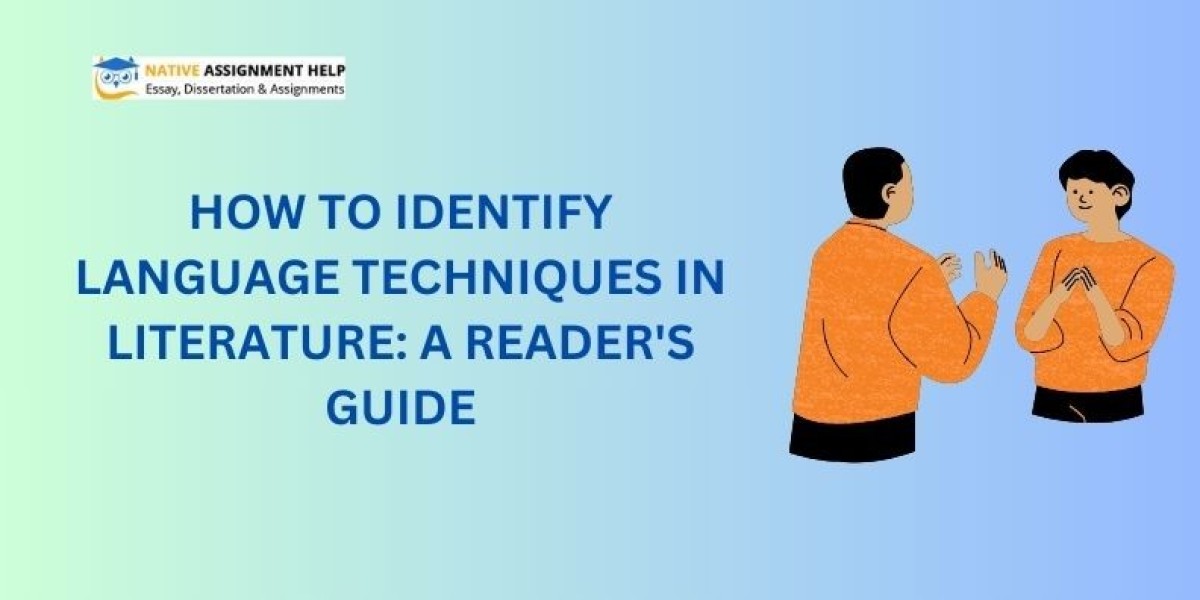Understanding how authors use various Language Techniques is key to appreciating literature. These tools and methods shape the way writers express ideas, emotions, and narratives. Identifying these language techniques can help you unlock deeper meanings within texts, making you a more engaged reader. This guide will explore common language techniques in literature and show you how to spot them effectively.
What Are Language Techniques?
Language techniques are literary devices or tools that writers use to communicate with their readers more effectively. These methods can emphasize certain themes, add depth to characters, or create mood and atmosphere. Recognizing these techniques allows you to appreciate how a writer crafts their work and delivers their message.
Common language techniques include metaphors, similes, alliteration, personification, and hyperbole. However, they are not limited to these examples. There are numerous ways in which an author might manipulate language to create a desired effect. Understanding these tools will improve your analytical skills when reading literature.
Why Are Language Techniques Important in Literature?
Writers use language techniques to evoke emotions, convey deeper meanings, or emphasize particular points in their work. By using these methods, they guide readers' responses to a text, whether it’s invoking empathy for a character, establishing a tense atmosphere, or highlighting a moral lesson.
Being able to recognize language techniques can deepen your understanding of a text. These techniques often reveal layers of meaning that might not be immediately apparent. They also help you connect with the text on an emotional or intellectual level, enhancing your overall reading experience.
How to Spot Language Techniques
Spotting language techniques requires close attention to both the literal and figurative language within a text. Here are some steps you can take:
Read Actively
Rather than skimming through a text, read it carefully, paying close attention to how words are used. Ask yourself questions like:
- Is the author trying to create a specific mood?
- What imagery or symbols are used?
- How does the tone of the writing make you feel?
These questions can lead you to identify the language techniques employed.
Look for Patterns
Authors often repeat certain words, phrases, or ideas to emphasize their importance. Recognizing these patterns can help you spot techniques such as alliteration, rhyme schemes, or motifs.
Analyze the Use of Figurative Language
Figurative language, such as metaphors and similes, is one of the most common language techniques in literature. These comparisons help create vivid imagery and add depth to descriptions. If you notice a phrase that doesn’t seem to make literal sense, it may be figurative and worth analyzing.
Pay Attention to Sentence Structure
An author’s choice of sentence structure can also reveal their use of language techniques. Short, abrupt sentences might be used to create tension, while long, flowing sentences can slow down the pace and allow for reflection.
Key Language Techniques and How to Identify Them
Now that you know how to approach a text, let's explore some of the most common language techniques and how to recognize them.
Metaphor
A metaphor is a direct comparison between two, unlike things without using “like” or “as.” It’s a tool used to create strong imagery or highlight an idea.
Example: "The world is a stage."
To spot a metaphor, look for statements where one thing is described in terms of another, unrelated concept. These comparisons are used to draw connections between the ideas presented.
Simile
A simile, like a metaphor, makes a comparison, but it uses "like" or "as" to do so.
Example: "Her smile was as bright as the sun."
Similes are easier to identify due to the presence of the comparison words. They are often used to create vivid, relatable imagery.
Personification
Personification gives human qualities to inanimate objects, animals, or abstract concepts.
Example: "The wind whispered through the trees."
Look for instances where non-human elements are described as performing human actions or having human characteristics. This language technique is often used to create a more intimate or relatable setting.
Alliteration
Alliteration is the repetition of consonant sounds at the beginning of words in a sentence or phrase.
Example: "Peter Piper picked a peck of pickled peppers."
This technique is often used to create a rhythmic or musical effect, making a passage more memorable or engaging. When analyzing a text, look for repeated sounds that stand out.
Hyperbole
Hyperbole is an intentional exaggeration for emphasis or effect.
Example: "I've told you a million times."
Authors use hyperbole to make a point or convey strong emotions. If a statement seems extreme or unlikely, it’s likely hyperbole at work.
Imagery
Imagery involves the use of descriptive language to create a sensory experience for the reader. It appeals to the five senses: sight, sound, touch, taste, and smell.
Example: "The aroma of freshly baked bread filled the room, warm and inviting."
When analyzing imagery, focus on the descriptive details that evoke a sensory reaction. Imagery often helps to set the tone and mood of a story.
Beyond the Basics: More Advanced Language Techniques
While the techniques mentioned above are common, there are more nuanced and advanced language techniques that skilled writers employ. Understanding these can further enhance your literary analysis.
Irony
Irony involves a contrast between expectations and reality. There are three main types: verbal irony, situational irony, and dramatic irony.
- Verbal irony is when what is said is the opposite of what is meant.
- Situational irony occurs when there is a discrepancy between what is expected to happen and what actually happens.
- Dramatic irony happens when the audience knows something that the characters do not.
Recognizing irony requires careful attention to context and tone.
Symbolism
Symbolism involves using an object, character, or event to represent something else, often an abstract concept like freedom, love, or death.
Example: A rose often symbolizes love or beauty.
Look for objects or motifs that recur throughout the text and consider what they might represent beyond their literal meaning.
Foreshadowing
Foreshadowing is a technique used to hint at future events in a story. Writers often use subtle clues to prepare readers for what’s to come.
Example: A character’s ominous statement early in a story may suggest a tragic event later on.
When analyzing a text, keep an eye out for small details or hints that suggest what may happen next. Recognizing these clues can enhance your understanding of a story’s structure.
How to Practice Identifying Language Techniques
Improving your ability to identify language techniques requires regular practice. Here are some strategies to help you develop this skill:
Close Reading
Engage in close reading, which involves analyzing a passage in detail. Break down sentences, focus on word choice, and consider how different language techniques contribute to the overall meaning.
Annotate Texts
When reading, annotate the text by underlining or highlighting examples of figurative language, repetition, or other language techniques. Write notes in the margins about how these techniques contribute to the theme or mood of the work.
Practice with a Variety of Texts
Different genres and authors use language techniques in diverse ways. To become proficient, read widely, including poetry, prose, drama, and non-fiction. This exposure will help you see how techniques vary depending on the type of writing.
Conclusion
Understanding and identifying language techniques is a crucial skill for any reader looking to deepen their appreciation of literature. These techniques are the tools authors use to convey themes, build characters, and immerse readers in their stories. By learning to spot these techniques, you can engage more fully with texts, uncover hidden layers of meaning, and develop a more analytical approach to reading.
With practice, your ability to recognize and analyze language techniques will grow, allowing you to enjoy literature in a richer, more meaningful way. Keep reading, keep exploring, and watch as the world of words opens up to you in exciting new ways.
This guide has outlined the most essential methods for identifying language techniques, helping you unlock the deeper potential of any literary work you encounter.



